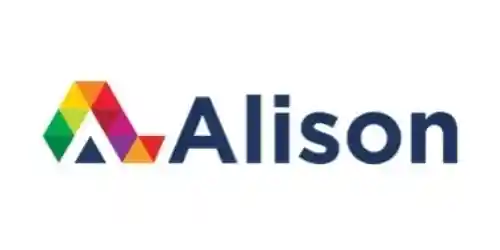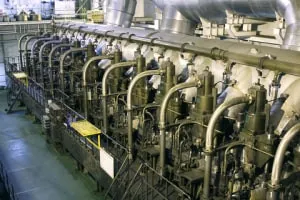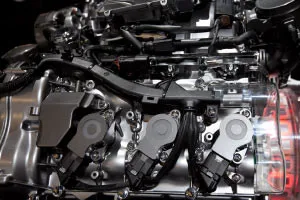
Mechanisms of Gas Turbines 
Get a comprehesive understanding of Mechanisms of Gas Turbines. This is a free course from Alison. AZ Class provides this course data for free. Learn more certificate and details here. Discover the inner workings of gas turbines with the free online course "Mechanisms of Gas Turbines." Learn about the fundamental principles of gas turbine starting systems, including procedures and safety precautions. Explore the latest advances in electric starters and General Electric's starting systems. Dive into pneumatic starters and investigate the components and operation of hydraulic start systems. Understand the lubrication requirements and systems for gas turbines, as well as the characteristics and types of fuel. Master detection methods for transducer faults and learn about spark ignition systems and power turbines. This course is perfect for those interested in clean energy and the planet's future. ▼
ADVERTISEMENT
Course Feature
![]() Cost:
Cost:
Free
![]() Provider:
Provider:
Alison
![]() Certificate:
Certificate:
No Information
![]() Language:
Language:
English
Course Overview
❗The content presented here is sourced directly from Alison platform. For comprehensive course details, including enrollment information, simply click on the 'Go to class' link on our website.
Updated in [October 07th, 2023]
What does this course tell?
(Please note that the following overview content is from the original platform)
This free online course introduces you to the fundamental principles of gas turbine starting systems, as well as their procedures and safety precautions. We break down start-up control features along with the characteristics of electric starters, including new advances to their technology. We explore the functionality and features of General Electric’s starting systems (the engine start, motoring purge, water wash and borescope) before examining pneumatic starters. This course investigates the components of the hydraulic start system and establishes its disadvantages: complexity, system weight, flammability of hydraulic fluids and the existence of high-pressure hydraulic lines. We study hydraulic start-system operation alongside functions of the hydraulic oil charge pump, charge pump filter and main hydraulic oil pump. This includes the hydraulic starter motor, centrifugal starting clutch and pre-start inspection steps.
This course then shows you how to work out much lubricating oil a gas turbine requires and consumes. We compare the two types of lubricating oil for gas turbine applications: standard and corrosion inhibiting. We demonstrate the harsh conditions experienced by lubrication oil in gas turbines: extreme heat, high contamination and inadvertent mixing with other substances. We cover two types of lubrication systems (wet sump and dry sump) while using a lube oil system schematic to explain the lube oil flow and components of the lube oil and lube scavenge subsystems. We lay out the characteristics, requirements, maintenance and handling of fuel before comparing its types: liquified natural gas (LNG), liquified petroleum gas (LPG), ethane and pure hydrogen. After establishing the functions and components of the fuel system, the course teaches you the requirements for a marine gas turbine engine: starting, steady running requirements and engine acceleration and deceleration.
We can help you to master detection methods used for typical transducer faults like speed and temperature transducers. This course also teaches you the spark ignition system’s working features and functions as you become familiar with power turbines and the significance of the synchro-self-shifting (SSS) clutch in starting them up. We unpack epicyclic gears (star, planetary and solar) and demonstrate the advantages of using multiple-planet wheels. We then take you through more clutches: twin-disk, airflex, hydraulic and sprag. We explain the purpose of the ‘bleed air’ and ‘intake and exhaust’ systems before delving into the data-processing aspect of the automated central operating systems (ACOS). This free online engineering course suits anyone interested in the inner workings of gas turbines, particularly those who care about the planet and want to keep it powered with clean energy.
We considered the value of this course from many aspects, and finally summarized it for you from two aspects: skills and knowledge, and the people who benefit from it:
(Please note that our content is optimized through artificial intelligence tools and carefully reviewed by our editorial staff.)
What skills and knowledge will you acquire during this course?
During this course on the mechanisms of gas turbines, learners will acquire the following skills and knowledge:
1. Understanding of gas turbine starting systems: Learners will gain a comprehensive understanding of the fundamental principles, procedures, and safety precautions associated with gas turbine starting systems.
2. Knowledge of start-up control features: Learners will be able to identify and analyze the various start-up control features of gas turbines, including the characteristics of electric starters and advancements in their technology.
3. Familiarity with General Electric's starting systems: Learners will explore the functionality and features of General Electric's starting systems, such as the engine start, motoring purge, water wash, and borescope.
4. Understanding of pneumatic starters: The course investigates pneumatic starters, allowing learners to understand their components and operation.
5. Knowledge of hydraulic start systems: Learners will gain insights into the components and operation of hydraulic start systems, as well as the disadvantages associated with them, such as complexity, system weight, flammability of hydraulic fluids, and high-pressure hydraulic lines.
6. Understanding of lubricating oil requirements: Learners will learn how to calculate the amount of lubricating oil required and consumed by a gas turbine. They will also compare the two types of lubricating oil used in gas turbine applications: standard and corrosion inhibiting.
7. Familiarity with lubrication systems: The course covers two types of lubrication systems, wet sump and dry sump, and explains the flow and components of the lube oil and lube scavenge subsystems using a schematic.
8. Knowledge of fuel systems: Learners will gain an understanding of the characteristics, requirements, maintenance, and handling of fuel in gas turbines. They will also compare different types of fuel, such as liquified natural gas (LNG), liquified petroleum gas (LPG), ethane, and pure hydrogen.
9. Mastery of transducer fault detection methods: Learners will acquire skills in detecting typical transducer faults, including speed and temperature transducers.
10. Understanding of spark ignition systems: The course teaches learners about the working features and functions of spark ignition systems, particularly in power turbines. They will also learn about the significance of the synchro-self-shifting (SSS) clutch in starting up power turbines.
11. Knowledge of epicyclic gears and clutches: Learners will gain an understanding of epicyclic gears, including star, planetary, and solar gears. They will also learn about different types of clutches, such as twin-disk, airflex, hydraulic, and sprag clutches.
12. Familiarity with the 'bleed air' and 'intake and exhaust' systems: Learners will understand the purpose and functioning of the 'bleed air' and 'intake and exhaust' systems in gas turbines.
13. Understanding of automated central operating systems (ACOS): The course delves into the data-processing aspect of ACOS, providing learners with insights into the automated control and monitoring systems used in gas turbines.
Who will benefit from this course?
This course on the mechanisms of gas turbines will benefit individuals who are interested in understanding the inner workings of gas turbines. It is particularly relevant for professionals in the engineering field who work with gas turbines or are involved in the design, maintenance, and operation of gas turbine systems. This includes engineers specializing in mechanical, electrical, or aerospace engineering. Additionally, individuals working in the energy industry, specifically in power generation or renewable energy sectors, will find this course valuable. The course also caters to those who are environmentally conscious and interested in clean energy solutions.
Course Syllabus
Starting, Lubrication and Fuel Systems
In this module, you will be introduced to starting system procedures, electric starting methods, as well as pneumatic starters, and operations of a pneumatic starter. You will also be introduced to the two types of lubricating oil, types of lubricating systems which include; dry-sump and wet-sump lubrication. As well as types of fuels oil to use in a gas turbine engine, fuel injection system, and spark ignition system.Systems in Marine Gas Turbines
In this module, you will be introduced to the different arrangements in GT which include; single-shaft, split-shaft, and dual-shaft as well as the use of gears, gear teeth design, and the basic elements of epicyclic gears. You will also be introduced to the advantages of multiple planets, functions of the bleed air system, intake and exhaust systems of a gas turbine. As well as components, functions, and data processing systems of the ACOS.Course assessment
Course Provider

Provider Alison's Stats at AZClass
Discussion and Reviews
0.0 (Based on 0 reviews)
Explore Similar Online Courses

The Ultimate Color Grading Crash Course in DaVinci Resolve

Data Persistence with Room Course

Python for Informatics: Exploring Information

Social Network Analysis

Introduction to Systematic Review and Meta-Analysis

The Analytics Edge

DCO042 - Python For Informatics

Causal Diagrams: Draw Your Assumptions Before Your Conclusions

Whole genome sequencing of bacterial genomes - tools and applications

Industrial Engineering - Control Valve Basics

Diploma in Marine Diesel Engines


Start your review of Mechanisms of Gas Turbines